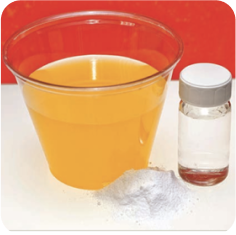Assessment Map
Welcome to the MOUD Hub. If you need help figuring out where to start, follow this quick assessment.

It is a synthetic opioid agonist that binds to opioid receptors. Methadone can be used as a tablet, oral solution, or injectable liquid, but is most commonly taken as an oral liquid solution. It can be sold under the names Methadose, Dolophine, and the generic name, Methadone.
Here is a helpful video on how methadone works in the brain

Methadone is available as a tablet, oral solution, or injectable liquid. Tablets are available in 5 mg and 10 mg formulations. As of January 1, 2008, manufacturers of methadone hydrochloride tablets 40 mg (dispersible) have voluntarily agreed to restrict distribution of this formulation to only those facilities authorized for detoxification and maintenance treatment of opioid use, and hospitals.

Best practice suggests being on methadone for at least 12 months.
However, it is best to consult your prescribing physician on what length of time is best for you. For more information, visit the website.
Methadone has not been found to be toxic to any organs in adults who have taken it for 10 to 14 years and in those who took it up to 5 to 7 years during adolescence.
It is dispensed at specialized opioid treatment programs or methadone clinics. Methadone is usually taken daily at a clinic. People on methadone may be able to take doses home after a period of stability. If you are ready to find a methadone clinic near you, visit our preparation phase of this website for these resources by clicking here.
Methadone helps with cravings and withdrawal symptoms. It is long-acting, versus shorter-acting opioids like heroin, fentanyl, and oxycodone. This is helpful as it stays in the body longer and its effects last up to 24 to 36 hours, giving more time to avoid withdrawal.
Methadone allows people to live a more functional life
People who are stable on methadone are able to get back to work and perform well at their jobs.
Methadone maintenance has been found to help with reducing heroin use, lowering risk of incarceration, improving social functioning and physical symptoms, along with improving quality of life.
Methadone also reduces the death rate associated with opioid use
There is a risk of overdosing with methadone, especially if you stopped taking opioids and start again.
Past studies have found that overdose from methadone is highest in the first two to four weeks of treatment and the first four weeks out of treatment.
The risk of overdosing is higher when mixing opioids with other substances and not following the prescribing guidelines set by your provider.
Methadone maintenance can be a long-term treatment. The length of treatment can vary to up to 20 years and more. It is up to you and your treatment goals, along with what your doctor recommends. For more information, visit these websites.
Methadone is a treatment option for opioid use disorder. It has been shown to lower the risk of death and improve people’s quality of life.
Methadone also doesn’t produce the euphoria one feels in other opioids, like heroin.
This website describes it well, “Methadone is to opioid addiction recovery as insulin is to diabetes, or hypertension medicine to high blood pressure, or antidepressants to depression.”
Yes, Methadone can be used for maintenance and detox.
When using it for detox, patients are switched to methadone and then the dose is lowered gradually over the course of about a week. However, best practices suggest using methadone for at least 12 months.

There are some common misconceptions about methadone. Chances are, if you have a question about it, that question has already been answered. Here are some resources that dispel these myths, along with some of the most common myths.
False: The withdrawal from methadone doesn’t last longer than other opioids. Additionally, methadone is NOT more addictive than opioids. Correctly tapering off methadone will only result in mild withdrawal symptoms. Medically supervised withdrawal and tapering also result in being more likely to remain opioid-free versus quitting cold turkey.

False: Methadone is not worse for the body compared to other opioids. Methadone is safer than taking street opioids due to being legally prescribed and taken orally, rather than having unknown additives in them.

False: When taking a therapeutic dose provided by a medically-supervised treatment program, methadone will not make you feel high. In the beginning of treatment, you may experience some side effects, like feeling sleepy or lightheadedness, that may arise when adjusting dosage. It will take time to develop tolerance to the sedation and to start feeling normal and having a reduction in cravings for opioids.
False: Methadone is a treatment for opioid use disorder and is meant to help you recover through reducing or ceasing use of other opioids. It reduces craving as it has a much longer effect in the body and can help maintain a functional life and help people get back to school and work. Methadone is not a substitute for another drug and people on treatment depend on it in the same way that people with diabetes depend on insulin.

False: Long-term use of methadone is safe and will not damage these organs. It will not damage your memory when taking the correct dose. Methadone will not rot your teeth and bones. Methadone can cause dry mouth, which can make you more prone to producing plaque, which is related to gum disease. To help protect your teeth, follow a dental routine that includes brushing and flossing everyday, rinsing your mouth with mouthwash, and going to the dentist regularly. If you feel like your bones are rotting or aching, it may be due to being on too low of a dose and may be a symptom of withdrawal. Speak to your provider about correcting your dosage and see if that helps the problem.